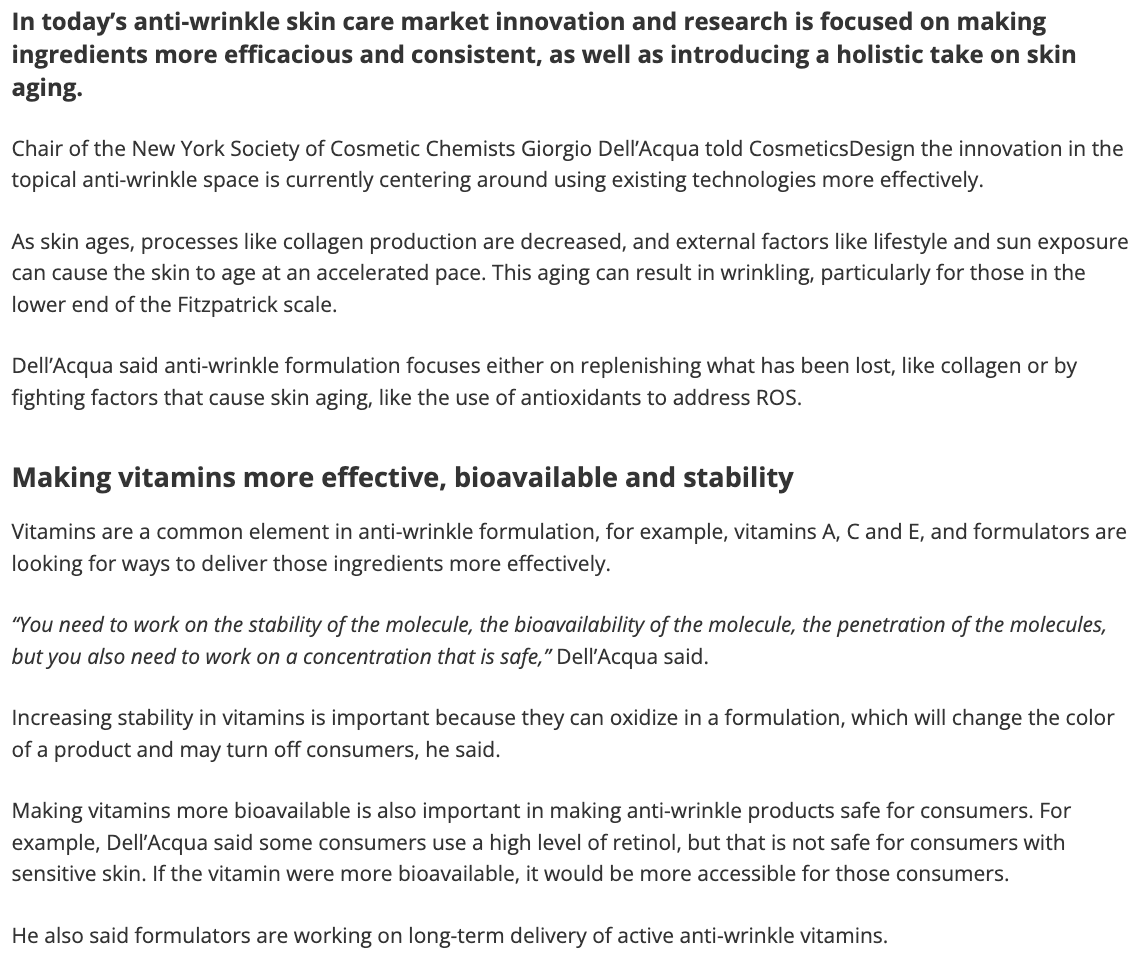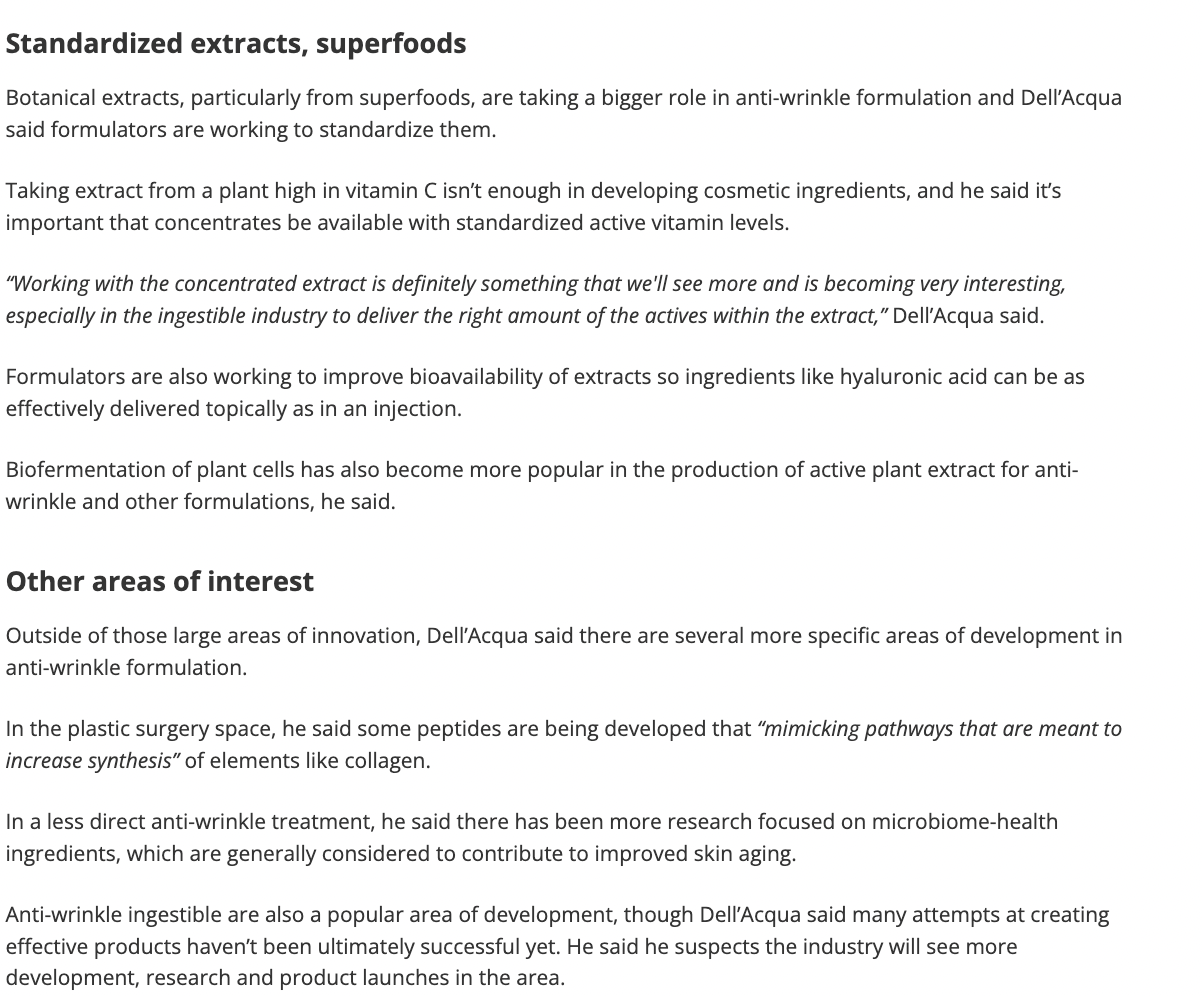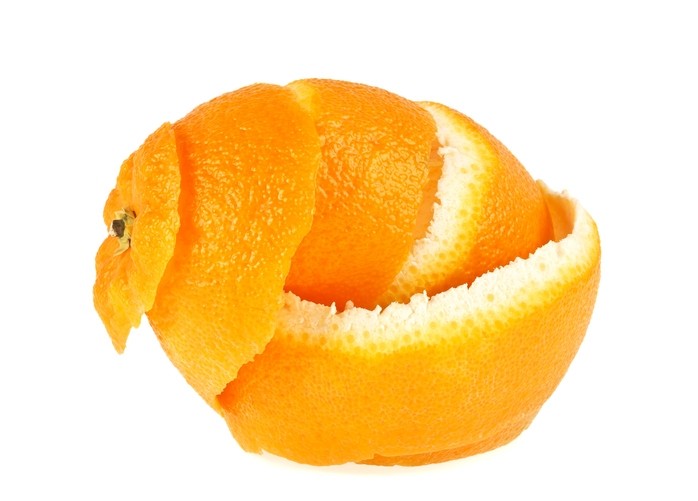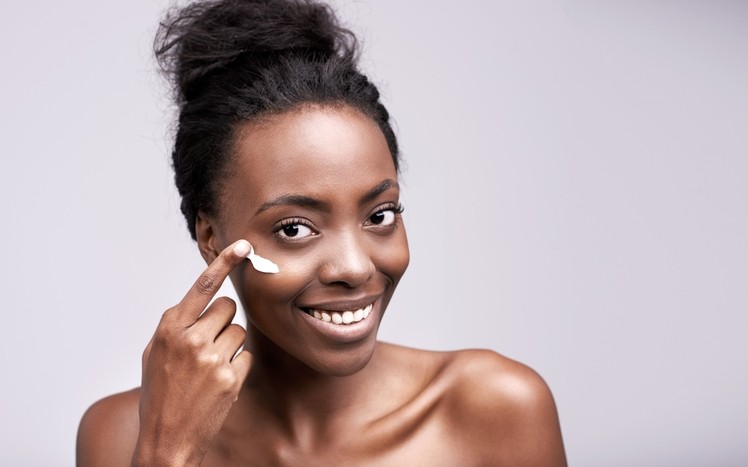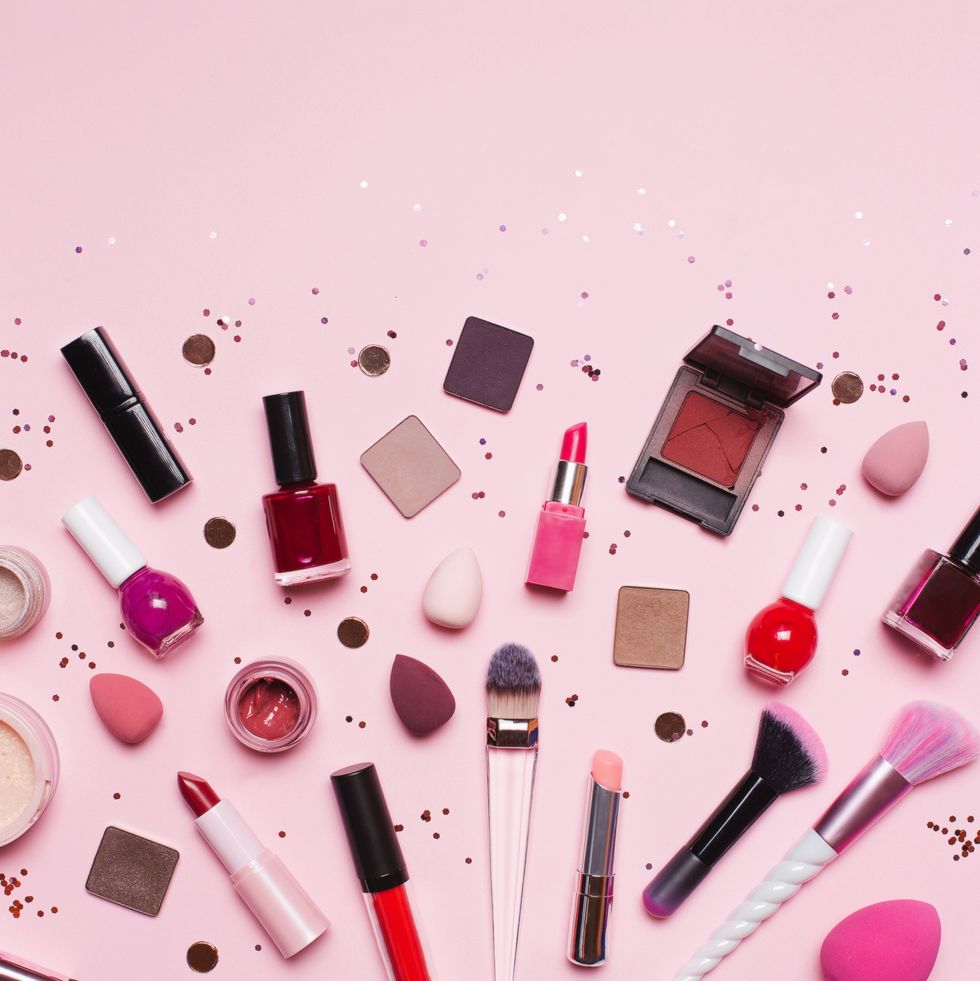INDIE 360° Pavilion Spotlights Indie Companies Curated by Access Beauty Insiders at the Leading Beauty & Personal Care Ingredients and Formulation Event held May 3 & 4
(New York, NY, April 2022)—NYSCC (New York Society of Cosmetic Chemists) is pleased to announce that Noah Rosenblatt, President of North America at Space NK will address attendees during a one-on-one fireside chat on Wednesday, May 4th at 9:00 am during Suppliers’ Day at the Javits Center in New York. This fireside chat, “Space NK: Bridging High Street to Main Street,” will be moderated by Kelly Kovack, Founder & CEO of BeautyMatter. Topics covered will address a multitude of subject matters including consumer migration from cities to small towns and how that impacts today’s retail landscape, to ingredient transparency and consumer shopping behavior vis-à-vis ingredients. Beauty founders and the supplier community will find the conversation relevant and insightful.
INDIE 360° at Suppliers’ Day is an immersive educational and sourcing experience providing up and coming indie brands with insight, information and resources needed to succeed. The program was created to foster connections between indie brands and suppliers and allow for open communication as well as to spotlight newer to market companies who are utilizing unique ingredients or combination of ingredients. The INDIE 360° program is moderated and chaired by Luciana Coutinho with the pavilion participants curated by Daniela Ciocan, Access Beauty Insiders.
“We are thrilled to offer this fireside chat as part of the INDIE 360° program,” said Giorgio Dell’Acqua, Chair, NYSCC. “Noah has a proven track record of discovering and nurturing founder brands as well as connecting with consumers. His conversation with Kelly will be a highlight of our event and inspire and engage our attendees.”
Rosenblatt joined Space NK in 2015, bringing more than eight years of beauty experience with prior roles at LVMH and 20 years of retail industry experience working with numerous emerging brands looking to expand their footprint in the US. Throughout his tenure Noah has built meaningful relationships with brands and founders alike to ensure Space NK continues to be relevant in the marketplace. From long term partners to newer developed relationships, under his leadership nearly 50 brands are part of the Space NK wholesale portfolio including By Terry, Chantecaille, Tata Harper, Natura Bisse, Vintners Daughter, Aesop, Diptyque and Boy Smells.
A half-day INDIE 360° educational program will follow the fireside chat on May 4th and feature a presentation from BeautyStreams on “What’s Happening in the INDIE Market? Trends & Forecasts;” followed by a “Panel of Founders,” from entrepreneurial companies led by Deanna Utroske of Beauty Insiders. There will also be timely topics discussions on ”The Storm Continues: Beauty Industry Supply Chain Update and Outlook presented by IBA;” “Leveraging Corporate Accelerators to Spur Greater Inclusion in Personal Care;” and “Advertising 101: Best Practices for Marketing Ingredient/Product Benefits.”
The INDIE 360° Pavilion on the exhibit floor highlights fresh ideas and concepts from select companies who are utilizing unique combinations of ingredients and novel formulations. Companies participating include CandaScent Labs, Dr Lili Fan Probiotic Skincare, High on Love, I-on Skincare, Lamik Beauty, Malibu Apothecary, Onekind, PRIORI Adaptive Skincare, Redmint, Shielded Beauty, Sunrise Session, and Touch in Sol.
Show attendees will be able to meet with the founders of these companies and vote for the ‘PEOPLE’S CHOICE AWARD’ with the winner being announced on Wednesday, May 4th over a champagne reception starting at 3 p.m.
The INDIE 360° Program at Suppliers’ Day was made possible by the support of BASF, Grant Industries, Lubrizol, luluble, and TRI-K.
Suppliers’ Day is the NYSCC flagship event and attracts participants working in R&D and product development for the biggest brand manufacturers in beauty and personal care as well as emerging independents. Additional educational programs offered this year will cover microbiome, natural colorants, in-vitro modeling, cosmetic regulations, safety assessment & quality assurance, along with “Digital Age of Beauty,” “Discover Sustainability,” “World of Chemistry,” and “Hair: Textured, Curly, Straight?” programs and a “Regulatory Update” session. Future Chemists Workshop, Mentorship Lunch Mixer, and the SCC/NYSCC Co-sponsored Career Development Day will be held in support of young professionals in the industry. The NYSCC Industry Awards Night will take place on May 3rd at SONY Hall and feature the announcement of the finalists of the CEW Supplier’s Beauty Creators Award.

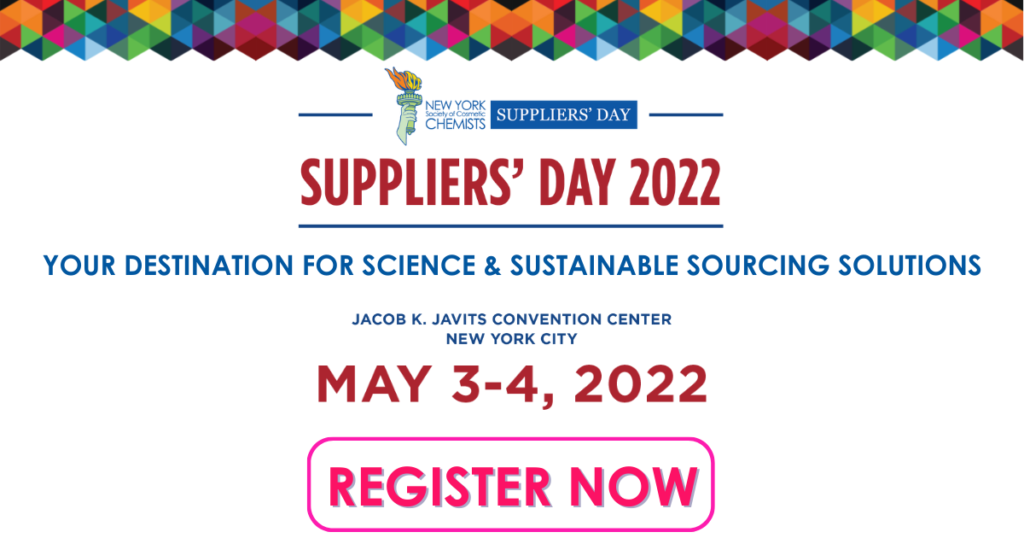
 Michael Anthonavage has 26 years of experience in personal care product development and a career spanning background in skin biology, education, and medical technology. Michael has extensive knowledge in product development in personal care product design and specializes in R&D to marketing translation as well as claims validation both in-vitro and in-vivo. He is also an engaging public speaker and product technology advocate with an ability to marry complex ideas and concepts to various consumer needs. Michael is currently the VP of Operations & Technology at Eurofins CRL, Inc. as well as an educator in herbal studies, clinical lab interpretation, product development strategies, physiology, and skin biology. Michael’s previous positions have focused on product development for multi-national corporations in Consumer Products and has held R&D leadership positions at several industry ingredient suppliers where he has championed innovative ingredient portfolios. Michael is currently on the NYC SCC Scientific Advisory Board and has given several lectures for the SCC over the years. He has a variety of publications and patents to his name and continues to be an influential speaker and educator in the personal care, bioinstrumentation, and skin testing arena.
Michael Anthonavage has 26 years of experience in personal care product development and a career spanning background in skin biology, education, and medical technology. Michael has extensive knowledge in product development in personal care product design and specializes in R&D to marketing translation as well as claims validation both in-vitro and in-vivo. He is also an engaging public speaker and product technology advocate with an ability to marry complex ideas and concepts to various consumer needs. Michael is currently the VP of Operations & Technology at Eurofins CRL, Inc. as well as an educator in herbal studies, clinical lab interpretation, product development strategies, physiology, and skin biology. Michael’s previous positions have focused on product development for multi-national corporations in Consumer Products and has held R&D leadership positions at several industry ingredient suppliers where he has championed innovative ingredient portfolios. Michael is currently on the NYC SCC Scientific Advisory Board and has given several lectures for the SCC over the years. He has a variety of publications and patents to his name and continues to be an influential speaker and educator in the personal care, bioinstrumentation, and skin testing arena.